Hello world! 👋
A few weeks ago, I did something awesome. I spoke at a learning conference for the very first time, at DevLearn 2018 in Las Vegas. To my surprise (and what felt like horror at the time), I had a packed room of over 450 attendees!

My topic was on “Transforming Boring Content into Engaging Microlearning”. And of course, I started my one-hour session with a meme.
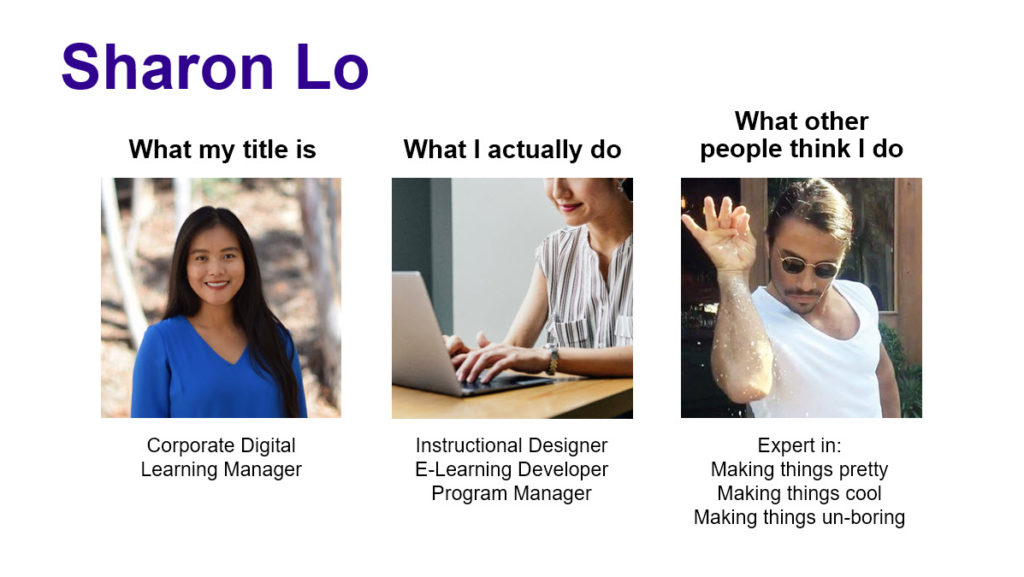
I’m sure all my instructional designer friends out there can relate. 😂 But in all seriousness, the third one “expert in making things un-boring” I’m actually proud of. It takes creativity and skill to take a boring subject and create something engaging and enjoyable.
Especially since way too many e-learning courses out there look like this:
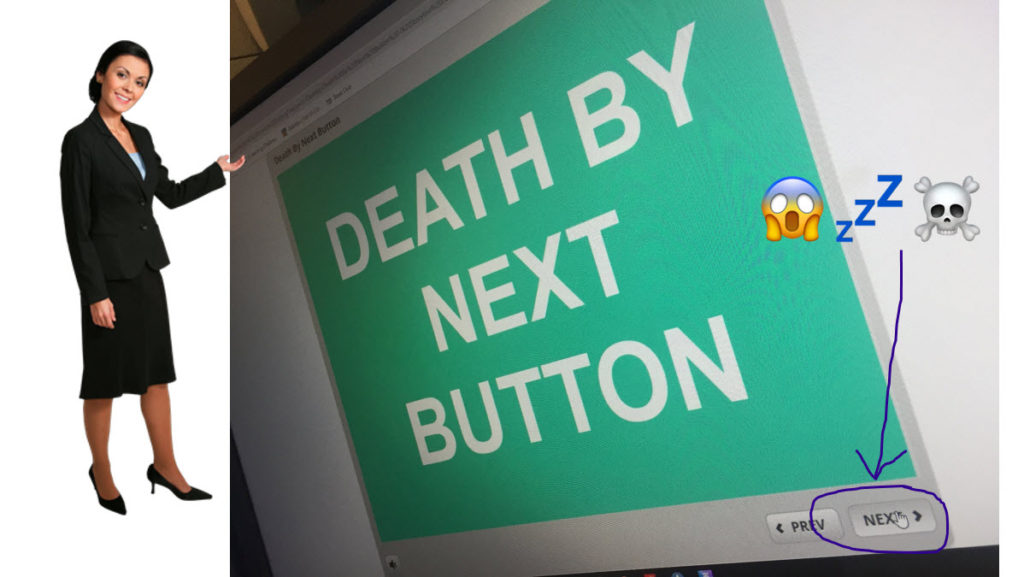
Basically, a talking PowerPoint with a mysterious character gesturing on the side. You keep clicking the next button until the end, where you take a multiple-choice quiz, and the answer is almost always… “All of the Above.” 😱💤☠️
Disclaimer: Microlearning is not the magic solution to cure all boring content. People won’t be automatically engaged because a course is cut into “bite-sized pieces.” (Also, a long course cut into 5-minute pieces isn’t microlearning.) However, if used intelligently and intentionally, it can be a very effective approach.
Here are 5 questions that will drive your design strategy:
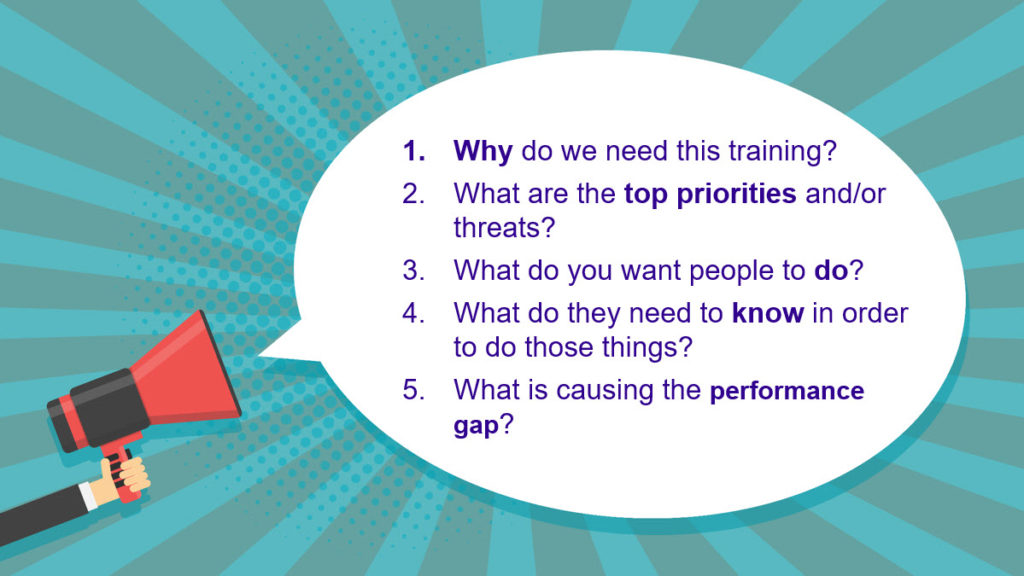
1. Why do we need this training?
2. What are the top priorities and/or threats?
These two questions help determine whether microlearning is suitable for the content, and help identify key topics for the individual modules. If your content has simple and distinct topics, and a key message/action item for each, you should consider microlearning.
3. What do you want people to do?
4. What do they need to know in order to do those things?
For each individual module, make sure you focus on the essential. What do you want people to do? And what do they need to know in order to do that? By designing with the outcome in mind, it helps you focus on the essential and cut out unnecessary/nice-to-have elements.

5. What is causing the performance gap?
And lastly, what is stopping people from doing what you want them to do? Is it skill, knowledge, motivation, awareness, or something else?
This gives you a great guideline on what to cover, how in-depth the content should be, the duration and the format of the module. For example, to target a skill deficiency, the module would probably be longer and more interactive (compared to a lack of awareness, let’s say), in order to provide that practice opportunity.
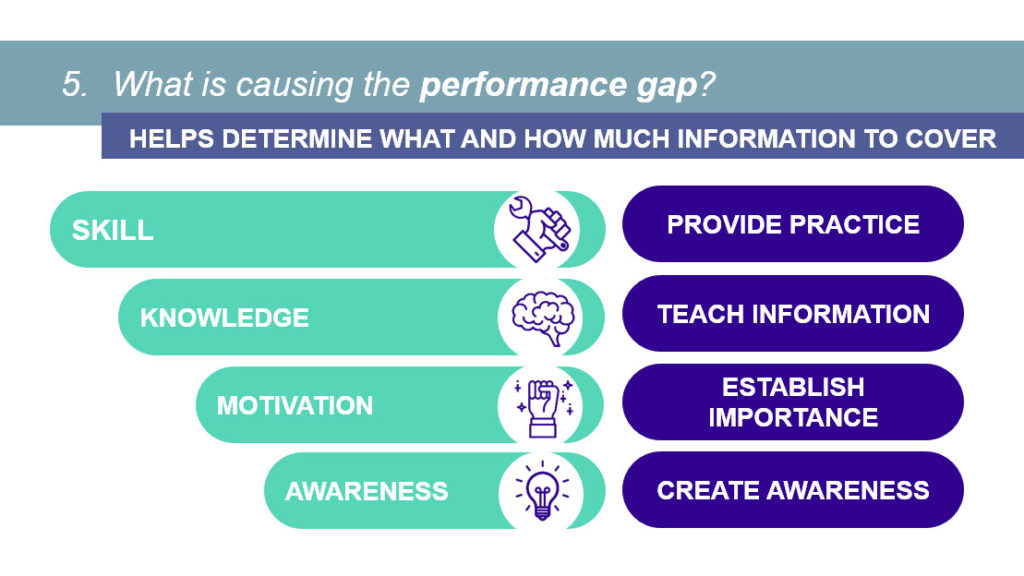
Microlearning doesn’t have to be a series of videos or short e-learning modules. Think outside the box! There are so many different ways you can present content. Here is a quick chart of different formats you can incorporate into a microlearning series, listed roughly in order of estimated development time:
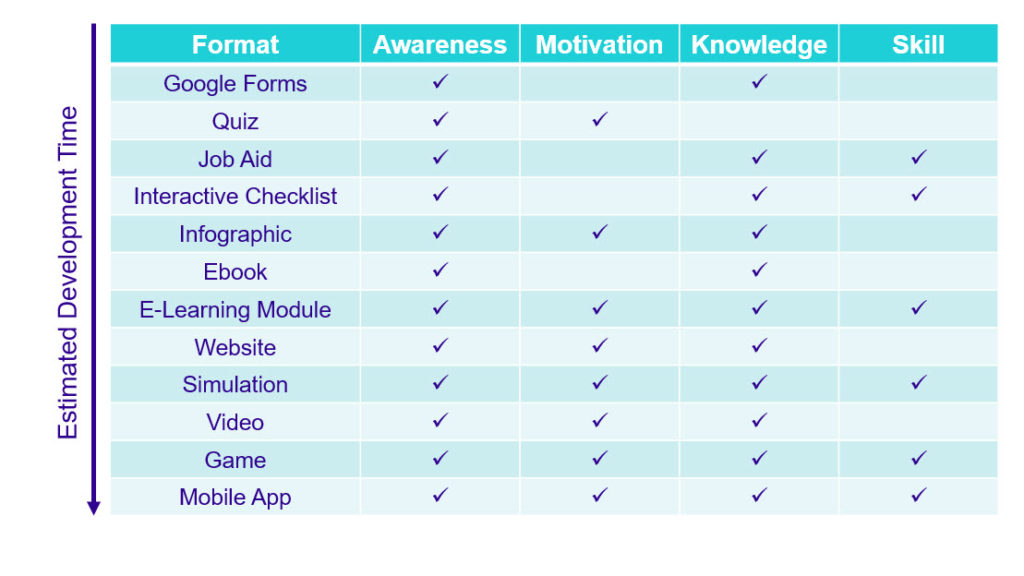
I encourage you to explore a wide variety of different formats to present content, and create “purposeful fun” in your training! While fun should never be the main goal, if a training is informative AND fun, it makes it much more engaging (and sparks attention, motivation, and retention!) 👍
In the session, I also talked about encouraging self-guided learning through interactions, and helping learners recognize their learning through reflections, quizzes, and surveys. I also showed examples of a cybersecurity microlearning series I built by leveraging these concepts/techniques.
I’ll leave you with my final slide.
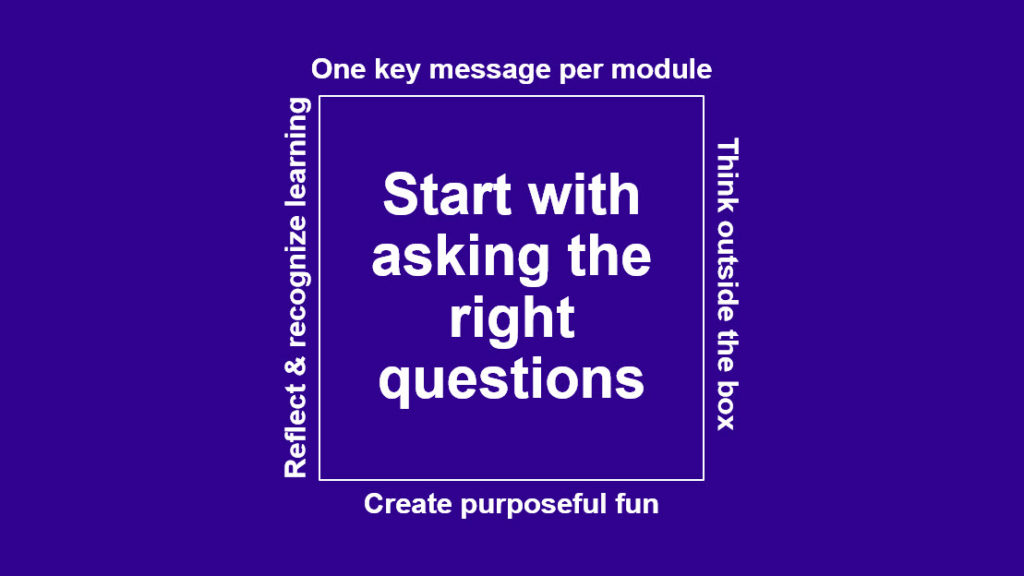
To sum it up, DevLearn was an amazing experience. 😍 I received so much support and wonderful feedback from people who are now inspired to “tackle” their own boring content in creative ways. I also attended a TON of great sessions and met many talented, innovative people in the industry. I walked away with so many ideas and new technology I can’t wait to explore.
DevLearn, I’ll be back! ✌️

